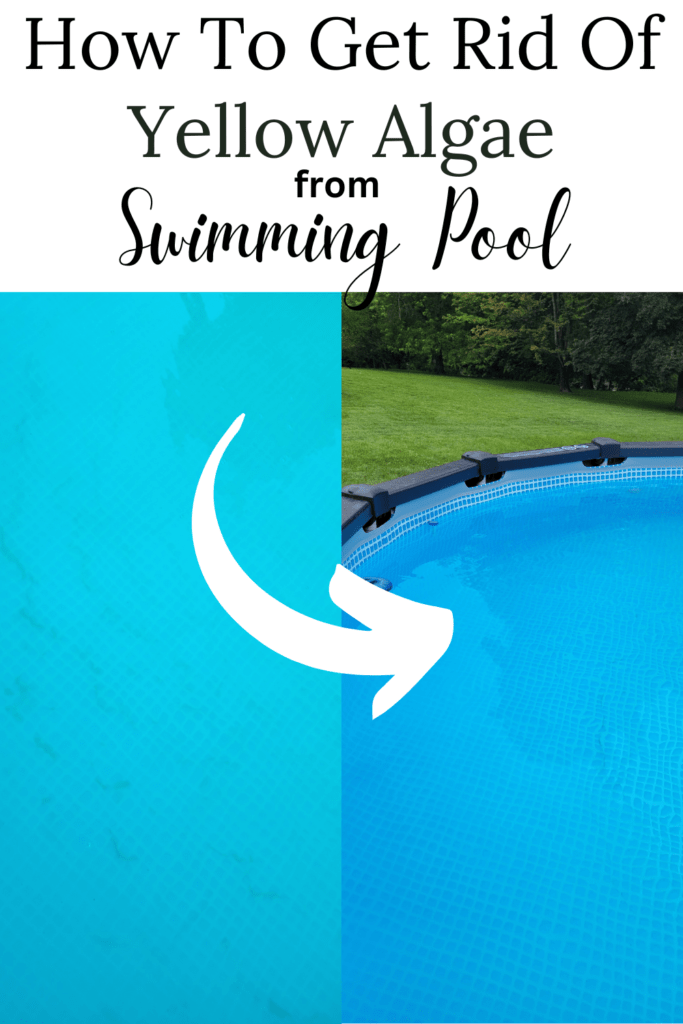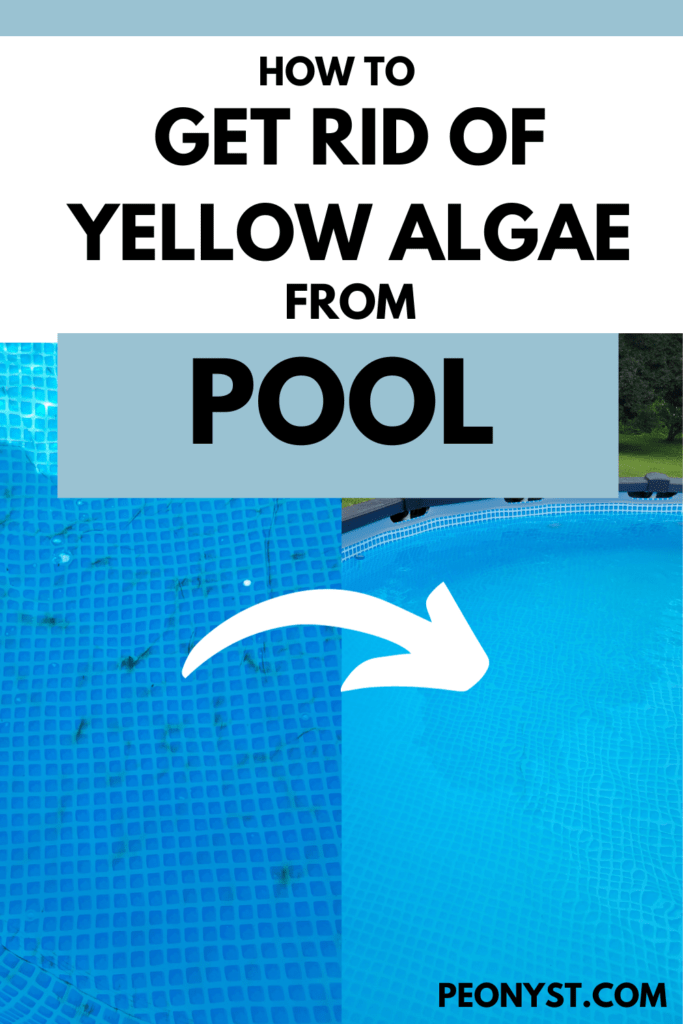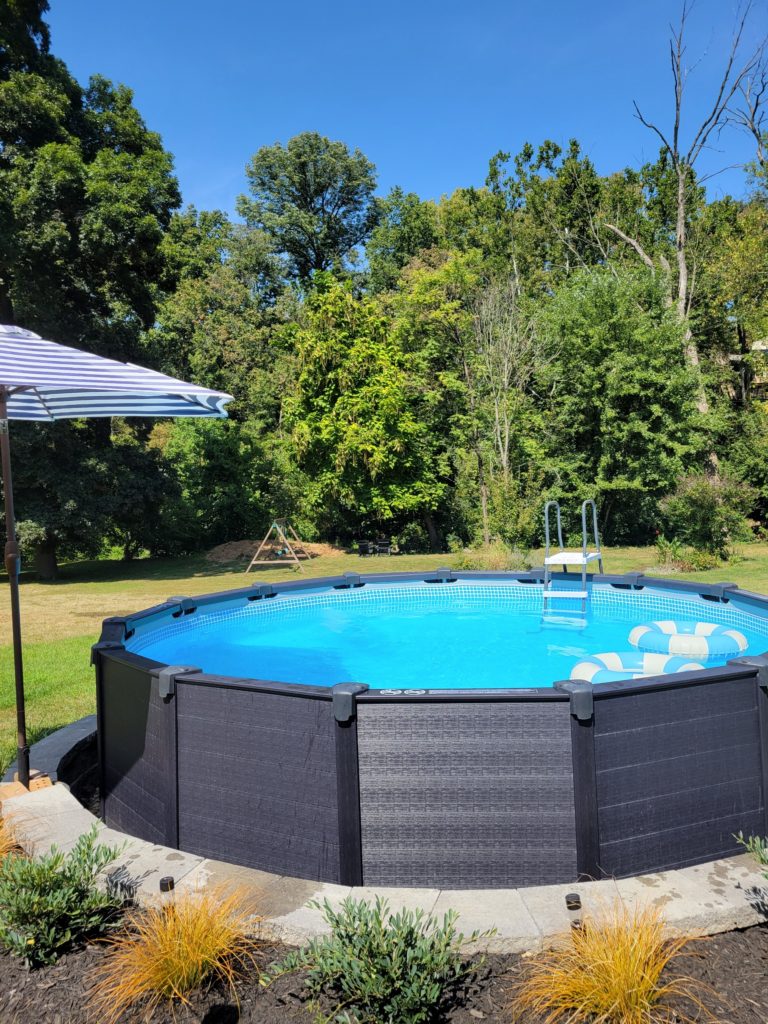Do you have yellow algae in your above-ground swimming pool? In this post, I am going to show you how you can get rid of yellow algae and enjoy a crystal-clear pool.
What is yellow or mustard algae?
Yellow or mustard algae in a swimming pool is a type of algae growth that can occur in pool water. It is not the same as the yellow algae (golden algae) found in natural aquatic environments, but it is referred to as “yellow algae” due to its yellowish or mustard-colored appearance. Pool owners often encounter different types of algae, including green algae, black algae, and yellow algae, and each requires specific treatment methods. Here are some key characteristics and information about yellow or mustard algae in pools:
Appearance: Yellow or mustard algae typically appear as yellowish or mustard-colored patches or spots on pool surfaces, such as the walls, floor, or steps. It can also make the water look cloudy or hazy.

Texture: Unlike green algae, which can make the pool water appear green and can have a slimy texture, yellow algae in pools often have a powdery or fine-grained texture. It can be easily brushed off pool surfaces.
Resistance: Yellow algae can be more resistant to typical pool sanitizers, such as chlorine, compared to green algae. It can sometimes reappear even after initial treatment.
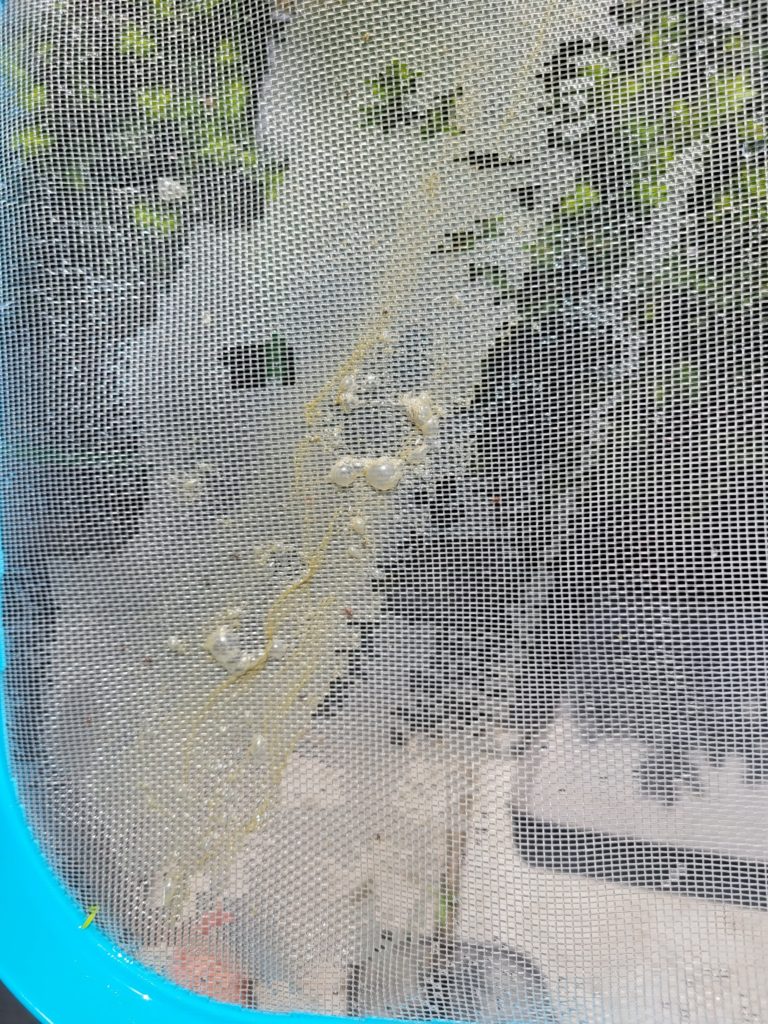
Growth Conditions: Yellow algae in pools thrives in areas with poor water circulation, unbalanced water chemistry, and low sanitizer levels. It can often be found in shaded or poorly maintained parts of the pool. Wearing the same swimsuits a few times and not washing them can also introduce mustard algae. Also, make sure to wear different swimsuits or rinse thoroughly after going to the creek or lake before getting in the pool.
This page includes affiliate links – full disclosure.
How to get rid of yellow algae?
To effectively treat and prevent yellow algae in a pool, you’ll need to take several steps:
- Brush pool walls and skim any debris on the surface of the pool. Avoid brushing the bottom because it will make the pool cloudy.
- Vacuum the bottom of the pool slowly and make sure to turn the pump to waste to remove algae from the pool. If you have a handheld pool vacuum, use an old sock and put it inside the net to absorb the algae. We want to get the algae out of the pool instead of stirring it with a brush or vacuum. I highly recommend this vacuum.
- Make sure to run the pump for 8-10 hours a day. If you see gray-colored algae in the bottom of the pool it means you killed the algae. Vacuum to waste or like use a handheld vacuum using a sock. Turn the pump to backwash, rinse, and refill water if needed.
- Test the pool water’s chemistry by using a test strip kit.
- Balance alkalinity and pH. Chlorine will not work well if the pH is not balanced.
- Shock the pool with a high dose of chlorine to kill the algae. Shock the pool in the evening because the sun can dissolve the chlorine reducing the ability to sanitize the pool water.
- Use an algaecide to kill yellow algae. I used this algaecide and did the initial dosage to kill algae and it worked great. You may also use algaecide specifically designed to target yellow or mustard algae.
- If you have cloudy water use a clarifier to make the pool water crystal clear.
Shop Here
If you got rid of the yellow algae then you did a great job! If not, repeat the process until you get rid of it.
When I first saw the yellow scum on the surface and walls of the pool, I thought it was from pollen. I left it untreated until the water started to turn cloudy and green. I shocked the pool so many times but it did not work.
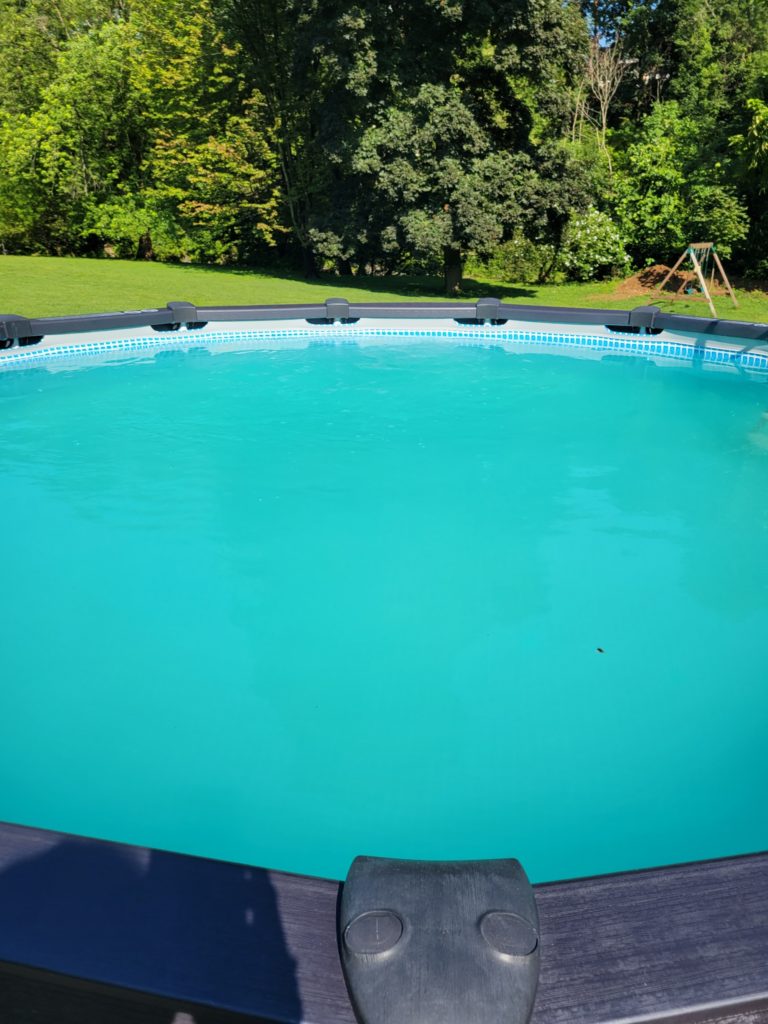
Yellow algae are stubborn and difficult to remove. I had to do the whole process (above) twice before I finally removed the algae.
How to prevent yellow or mustard algae from coming back?
Regular pool maintenance practices, such as maintaining proper sanitizer levels, ensuring good water circulation, and regular brushing of pool surfaces, can help prevent the growth of yellow algae. Ensure balanced water chemistry and proper pool water circulation and filtration to prevent the algae from returning.
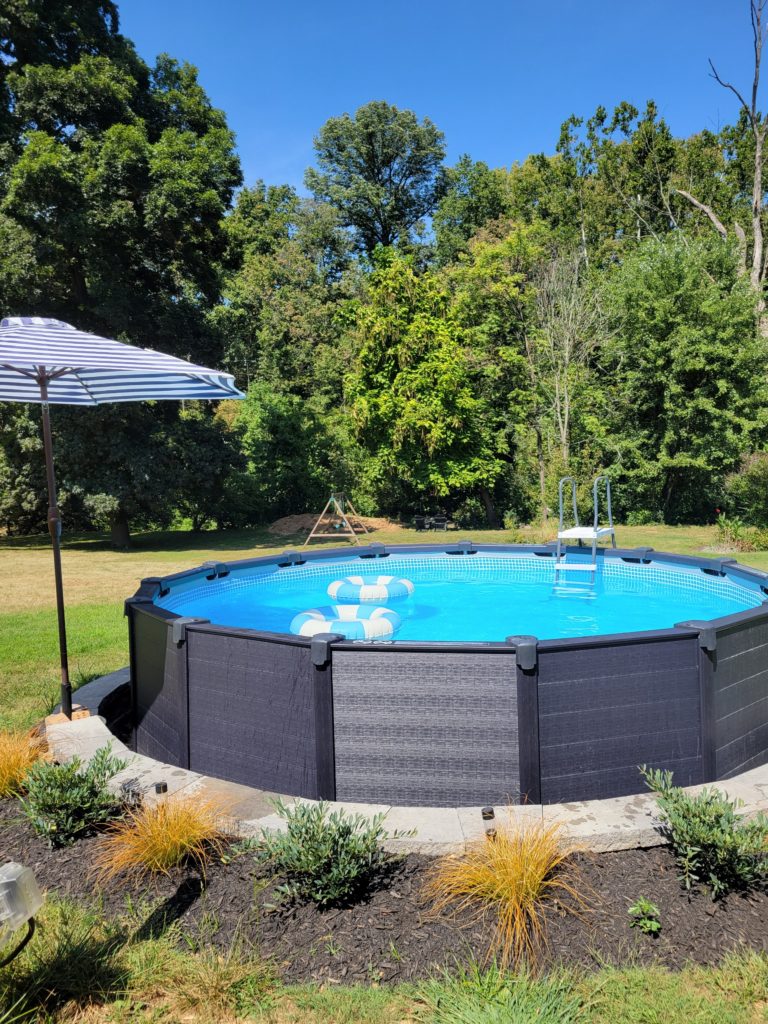
Wash your bathing suits and spray floaties, and pool ladders with bleach disinfectant spray before putting them in the pool. Yellow algae likes to cling to surfaces and crevices so make sure everything is sanitized before putting it in the pool.
I hope this post is helpful, if you suspect that your swimming pool has yellow or mustard algae, it’s essential to take prompt action to treat and eliminate it.
Jennabel
Other Posts You May Like:
Above-Pool Maintenance (Things You Need To Keep Your Intex Pool Clean)
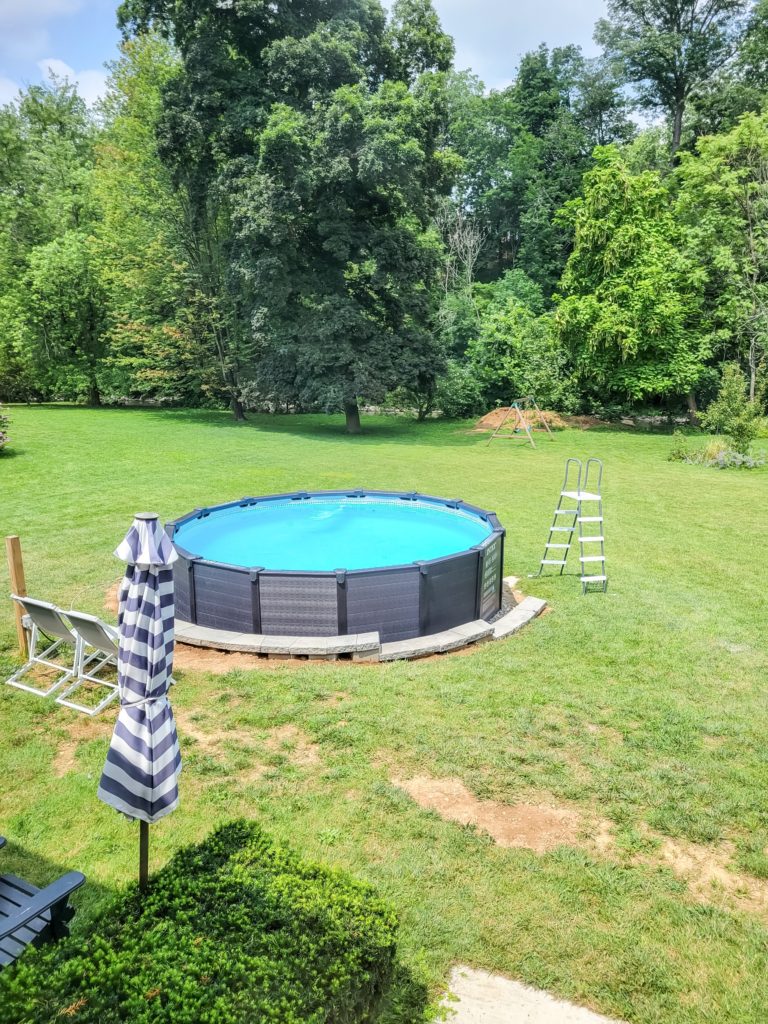
Intex Above-Ground Pool Landscaping Makeover (Pool Landscaping With Retaining Walls)
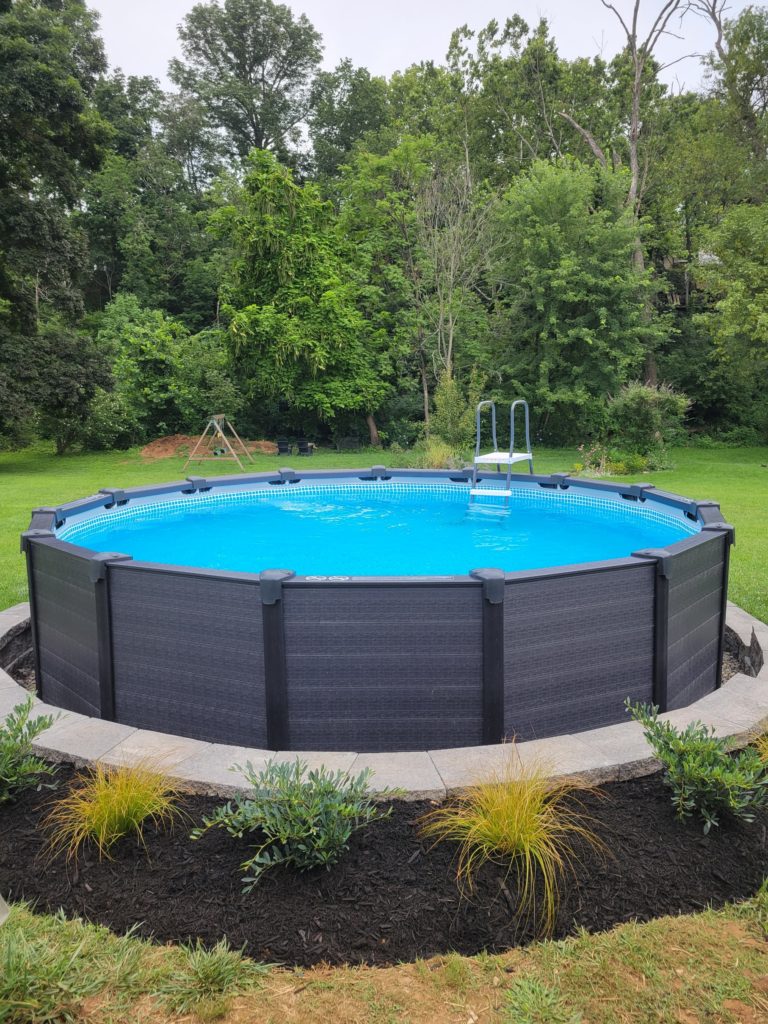
Pin for later:
